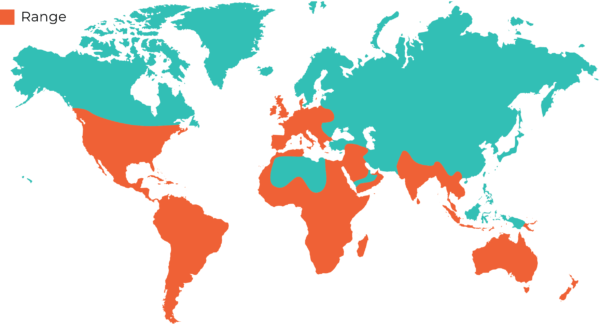Description
Barn Owls are medium-sized birds (females slightly larger than males), with a ‘heart-shaped’ facial disc. They have sandy orange and light grey upperparts and white to cream underparts. Both the back and breast are evenly spotted with black.
Distribution
The Barn Owl is found throughout the world.

Lifespan
The average lifespan of a Barn Owl is around 4 years out in the wild however they can live much longer in captivity being able to live for up to 10 years.
Size
28 - 39cm in length and 330 - 425g in weight.
Diet
Barn Owls feed mostly on small mammals, mainly rodents, and birds, but some insects, frogs and lizards are also eaten.
Habitat
By day the Barn Owl roosts in hollow logs, caves or dense trees, and is usually seen alone or in pairs. The preferred habitat is open, often arid (dry) country, such as farms, heath and lightly wooded forest.
Breeding
Barn Owls have no definite breeding season. Breeding takes place mostly in response to food availability and often twice per year. The nest is normally a hollow in a tree, but birds sometimes nest in caves or abandoned buildings. The pale white eggs are laid at 2-day intervals. The female alone incubates the eggs, but both parents care for the young. The young will perch in the vicinity of the nest site and be fed by the adults for a further month or so after leaving the nest.